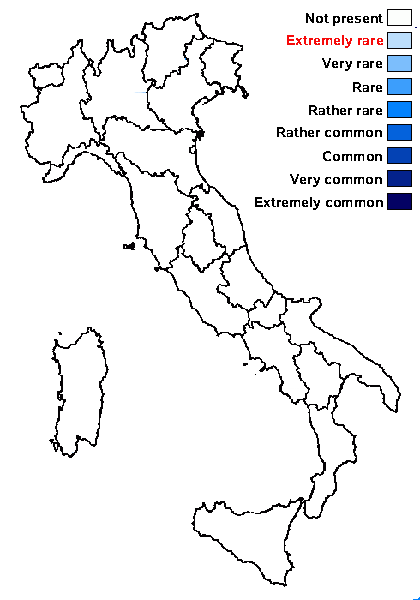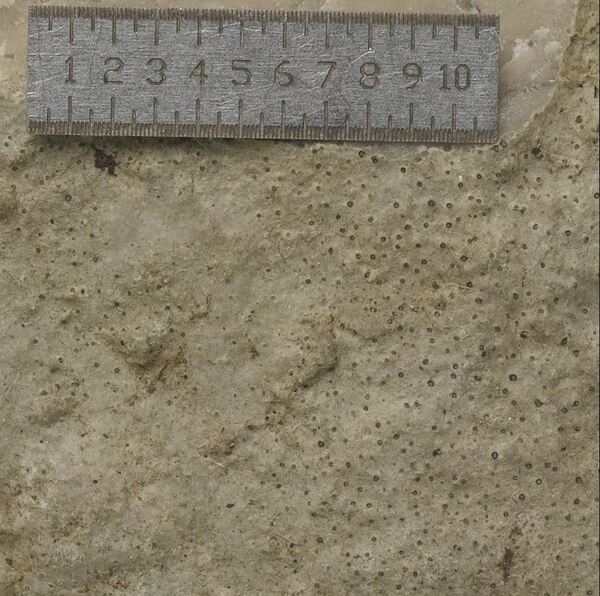Verrucaria contardonis Servít
Ann. Mus. Civ. Stor. Nat. Genova, 66: 236, 1953
Synonyms:
Distribution: N - Frl (Servít 1953).
Description: Thallus crustose, endo- or hemiendosubstratic, 30-60 µm thick, ecorticate, whitish, smooth, continuous to sparingly, irregularly and finely rimose near the perithecia, without a distinct prothallus. Perithecia black, numerous,-immersed in the rock to projecting with the upper third, 0.15-0.2 mm across, often depressed near the ostiole. Involucrellum hemispherical or broadly conical, dimidiate or extending to the base of the perithecium, 30-40 µm thick, contiguous with exciple in upper part, often more or less diverging in lower half; exciple subglobose, the wall brownish, c. 10 µm thick; hamathecium of up to 15 µm long, simple periphyses and periphysoids, interascal filaments absent; hymenial gel hemiamyloid, I+ red (I+ blue at very low concentrations of I), K/I+ blue. Asci 8-spored, clavate I-, fissitunicate, the wall thickened above, 45-60 x 20-24 µm, Verrucaria-type. Ascospores 1-celled, hyaline, oblong-ellipsoid, 13-23 x 8-12 µm. Photobiont chlorococcoid, the cells arranged in more or less vertical rows. Spot tests: K-, C-, KC-, P-, UV-. Chemistry: without lichen substances.
Note: A very poorly known calcicolous species, known only from the type collection at Zomeais (Tarcento, UD) near the river Torre. The type material needs further study: it could prove to be identical with V. inaspecta, in which case the epithet contardonis would have priority.
Growth form: Crustose endolithic
Substrata: rocks
Photobiont: green algae other than Trentepohlia
Reproductive strategy: mainly sexual
Poorly known taxon in need of further study
Commonnes-rarity: (info)
Alpine belt: absent
Subalpine belt: absent
Oromediterranean belt: absent
Montane belt: absent
Submediterranean belt: very rare
Padanian area: absent
Humid submediterranean belt: absent
Humid mediterranean belt: absent
Dry mediterranean belt: absent

Predictive model
Growth form: Crustose endolithic
Substrata: rocks
Photobiont: green algae other than Trentepohlia
Reproductive strategy: mainly sexual
Poorly known taxon in need of further study
Commonnes-rarity: (info)
Alpine belt: absent
Subalpine belt: absent
Oromediterranean belt: absent
Montane belt: absent
Submediterranean belt: very rare
Padanian area: absent
Humid submediterranean belt: absent
Humid mediterranean belt: absent
Dry mediterranean belt: absent

Predictive model
 INDEX FUNGORUM
INDEX FUNGORUM
 GBIF
GBIF
 DOLICHENS
DOLICHENS


